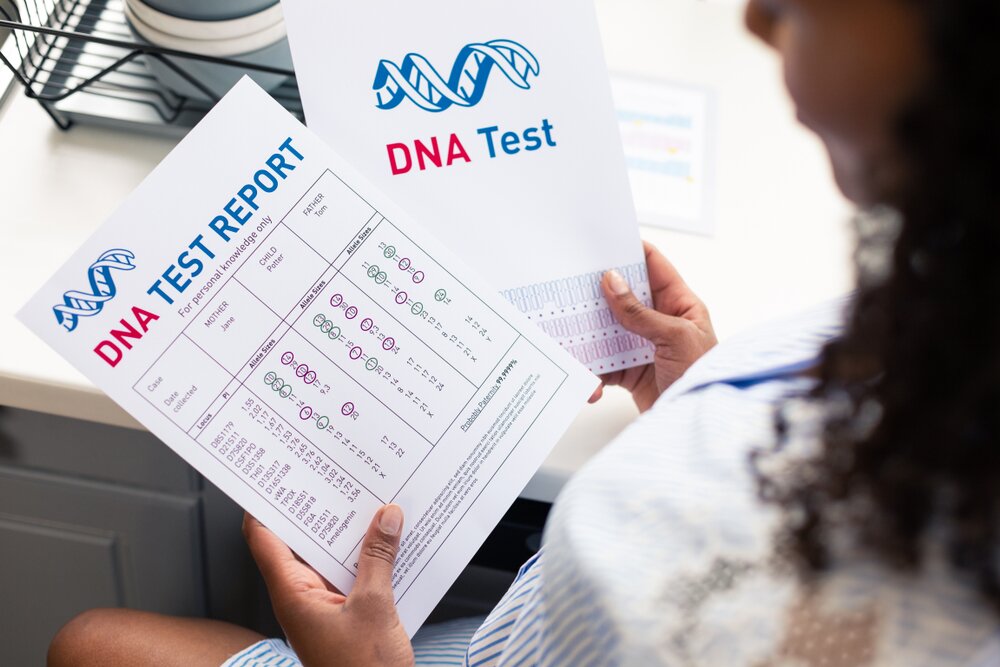Recent scientific advances and the progress that’s been made in DNA testing over the last few years has allowed people all over the world to reconnect with family, from long-lost ancestors to birth parents and adopted children.
Paternity testing is a commonly known type of DNA test thanks to a certain few daytime television shows - if you’ve ever had a day off during the week and you’ve had the TV on, then you’ll know the ones we’re talking about - but perhaps less advertised is sibling DNA testing, and with that comes less certainty regarding the accuracy of their results.
That’s where this article comes in, as we’re about to try and explain how accurate sibling DNA tests are and how they work.

What is a Sibling DNA Test?
To put it simply, a sibling DNA test tests the DNA of two potential siblings to find out whether or not they are biologically related. There are a number of reasons why sibling DNA tests are performed, often to establish paternity.
They can also be used for legal reasons, such as in a case to secure Social Security survivor benefits or as evidence for U.S. immigration applications. Maybe you’re purely looking for peace of mind?
Whatever the reason for performing a sibling DNA test, it’s understandable that you’d want to know how accurate it’s going to be, not only because the test itself is often quite expensive, but also because of the sensitive nature and emotions involved in these types of questions.
There are different types of sibling DNA tests available and they are designed to look at different familial relationships depending on the parental relationship(s) that are in question.
Just to recap, full siblings refers to two people who share both a biological mother and father, whereas half-siblings is used to describe people who share only one biological parent.
This is not to be confused with step-siblings, which is where two people share no DNA but are related by their parents’ marriage.
For example, if one of your parents married someone with another child, who has both a biological mother and father that are not shared with you, then you and the other child would be step-siblings, related by marriage but not by blood.
- Full Siblings Vs. Unrelated: This type of sibling test compares the DNA of two different people to find out if they share the same biological mother and father, or if they’re entirely unrelated. It’s most commonly used to prove the relationship between a U.S. citizen and their supposed sibling in applications for immigration visas.
- Full Siblings Vs. Half Siblings: This type of sibling test determines whether two people who share the same biological mother also have the same father. Most companies will recommend that the mother is also tested in this case, as it improves the conclusiveness of the test results by allowing the researchers to see exactly what was inherited by the father.
- Half Siblings Vs. Unrelated: This type of sibling test is probably the least common, but it compares the DNA of two people that have different biological mothers in order to find out if they share the same father. For the most accurate and conclusive results, it’s recommended that you test samples from one or both mothers.
To learn more about testing for half-sibling relationships specifically, check out our article on ‘Can a DNA Test Prove Half Siblings’ which covers this in more thorough detail.
How Does a Sibling DNA Test Work?
Like most DNA tests, a sibling test will require a swab DNA sample from the mouth of each participant. Far less invasive than a ‘DNA test’ sounds like it would be, right? Most sibling DNA test kits will include two siblings. Some will offer the option to add more, although this can sometimes come at an extra cost.
When your at-home DNA testing kit arrives in the post, all you need to do is is rub the inside of your cheek and tongue with the end of the swab to collect a buccal sample of the cheek cells.
Do this for about a minute and then leave the swab to dry. Once they’ve been sent back to the testing company for analysis, they will compare the DNA profiles in order to ascertain whether or not there is a biological relationship between the two.
The statistical analysis takes various different factors into account, and multiple markers (15 loci) on various chromosomes are analyzed and then compared to determine the results.
Full siblings typically share around 50% of their biological makeup as a result of common inheritance. Comparably, half-siblings only share around 25%. With your results, you’ll be given a probability of likeness which will indicate how confident the testing company is in the reported relationship.
There will be instructions and usually consent forms that come with your kit, so make sure you read these and fill them out correctly. Depending on the company you choose to perform your sibling DNA test, there’s usually a three to five working days wait as a minimum, and some can take even longer.
The testing company you go through will also influence how your results are presented to you, but each company will provide you with a full explanation and breakdown of how this works.

The Science Behind It
Sibling DNA tests are slightly more complicated than parental DNA tests due to the fact that siblings share less biological DNA in the first place. Remember, DNA is unique to each and every individual, so unless you’re an identical twin, you’ll never have an exact match.
You can, however, share DNA with others which is what will be picked up on in a DNA test. To complicate matters further, you can even share DNA with people who are not actually related to you at all!
No wonder people question the accuracy of these tests, as this is complicated stuff if you haven’t wrapped your head around it.
It also gets slightly more tricky when you’re testing to determine whether or not you’re half-siblings, as this would mean you only share 25% of DNA. Whilst this does still prove a familial relationship, it’s harder to establish the exact type of relationship that is shared.
For example, you could conduct a sibling DNA test with someone you’ve believed to be your brother your whole life, when in fact you’re actually cousins as this would also result in a 25% DNA match, which could lead to some awkward questions at your next family Christmas…
The level of accuracy depends on who is available for testing. Sibling DNA tests are typically performed when one or both parents are unavailable to be tested, and the lack of parental DNA limits the relevant genetic information that is required to establish a familial connection.
This means that parental lineage can only be determined by comparing the genetic information that is available and acquiring the results through statistical analysis. However, including a sample from a known parent can help in the interpretation of your results.
This is because it indicates which parts of your genetic information are inherited directly from your parents, which can help to narrow down your results.
Inconclusive Results
Even science gets it wrong sometimes, and there are a small number of instances (between 20%-40%) where your test results may come back inconclusive. If you’re hoping for a negative, don’t start celebrating too soon at the sight of an inconclusive result.
Likewise, don’t panic if this would come as disappointing news, as inconclusive does not mean that you’re not siblings. All it means is that the analysis failed to answer the question you’re asking.
Some causes or reasons for inconclusive DNA test results include:
- If there’s not enough evidence that there is a biological relationship between the samples you’ve sent for testing, for example, if the DNA markers indicate that the general population shares a lot of the genetic information that is shown to match between two potential siblings.
- Similarly, if there are too few DNA matches in the general population.
- In the case of some matches, mutations can alter the DNA marker which can result in a false match.
Final Thoughts
To reiterate, there is always a small chance that the results of your sibling DNA test will come back inconclusive.
While this type of testing has pretty high accuracy rates, they can never be 100% guaranteed to be completely correct. This is because DNA will never be an exact match, unless your sibling is an identical twin, that is.
If you want to improve the accuracy of your sibling DNA test results, it’s recommended that you include samples from a known parent where possible.
Asking the right question is another vital element of ensuring that your sibling DNA test results come back more accurate, as this will influence how the results of your test are interpreted.
Before you go ahead, make sure you know whether you’re looking to find out if you and your potential sibling are full or half-siblings.
By the end of this article, you probably know a lot more than you did before about sibling DNA testing, how it works, and how accurate it is.
We hope you find what you’re looking for, both in this article and in terms of your results.
